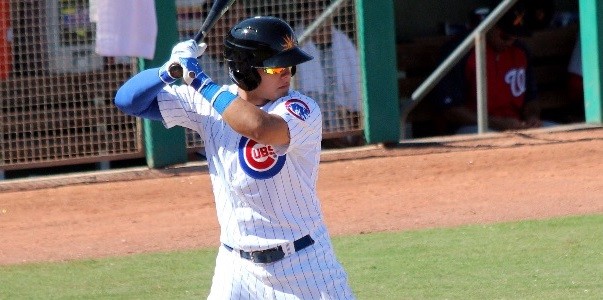Sometime this fall, I nearly posted an article cleverly entitled, “Does Bat Speed Help One Bat Against Speed?” It was to be an exploration of Javier Baez’s struggles in his first Major League stint. Honestly, I was surprised not to find it in my archives. I did find the article into which it turned, which didn’t even mention Baez, but I really thought I had published it…
Anyway, since I didn’t then, I’ll do it now. Only, most of the point has already been made for me, and in a more intelligent, mathematically precise way than I could have. Russell Carleton did this dive into the varying effects of velocity on different batters—that is, whether some players suffer more when the fastballs they face get faster than others do. What he found was that the least affected batters were guys like Martin Prado and Ben Revere, who have little power but are elite contact hitters. The smattering of examples he gave of players affected the most: Jonathan Singleton, Tyler Flowers and Javier Baez.
What might be counterintuitive about that, of course, is that Baez is noted for his bat speed. A common line of logic in player evaluation is that a player with exceptional bat speed derives part of their value from the ability to keep up with even elite heaters. If it turns out that that’s not true—if it turns out, in fact, that a violent swing makes it much harder to hit an upper-90s fastball—then maybe players like Baez are systematically overrated.
Of course, maybe bat speed has every bit of the value we suspect it does, but merely takes a different shape. Bat speed is a critical element of power; that should be self-evident. Perhaps players like Baez are much, much more able to hit the daylights out of tepid fastballs and other non-elite pitches than players without that tool. Perhaps, too, Baez simply hasn’t found the right way to harness his bat speed yet. He had only 229 plate appearances in his rookie campaign, and after roughly that number of plate appearances at each level of the minor leagues, he began to make adjustments and thrash opposing pitchers. It’s perfectly plausible that Baez’s most prized tool is exactly the one he’ll use to combat 100-mile-per-hour heat going forward, once he establishes better plate discipline and learns how to work an at-bat in the Majors.
I suspect the former is the more accurate hypothesis. Bat speed affects the quality of contact, but probably makes a swing necessarily harder to control. Therefore, a faster fastball provides players who swing much faster than the norm with almost no opportunity to adjust or align their swing, and probably spells a lot of swings and misses. Baez draws frequent comparisons to Gary Sheffield, but has not produced in the minors anything like the way Sheffield did, and doesn’t figure to do as well in MLB either. Maybe part of the reason, though, is that Sheffield played in an era when fewer pitchers came in for short bursts, and fewer pitchers of every stripe threw very hard. Maybe bat speed is a tool with diminishing value, because the league’s pool of pitchers has found a way to ramp up its pitch speed and nullify the advantage. Still, it does have value. Carleton will be studying a myriad of topics in this vein in coming weeks. Keep checking in on his work, because it’s brilliant, and I’ll be doing some digging of my own.
Next post: Should a Pitcher Be Eligible for the MVP?Previous post: EW Rewind: Episodes 9 and 10





Stephen Shaw
I would tend to agree. Bat speed might be better suited for evaluating a prospect that might have power potential.